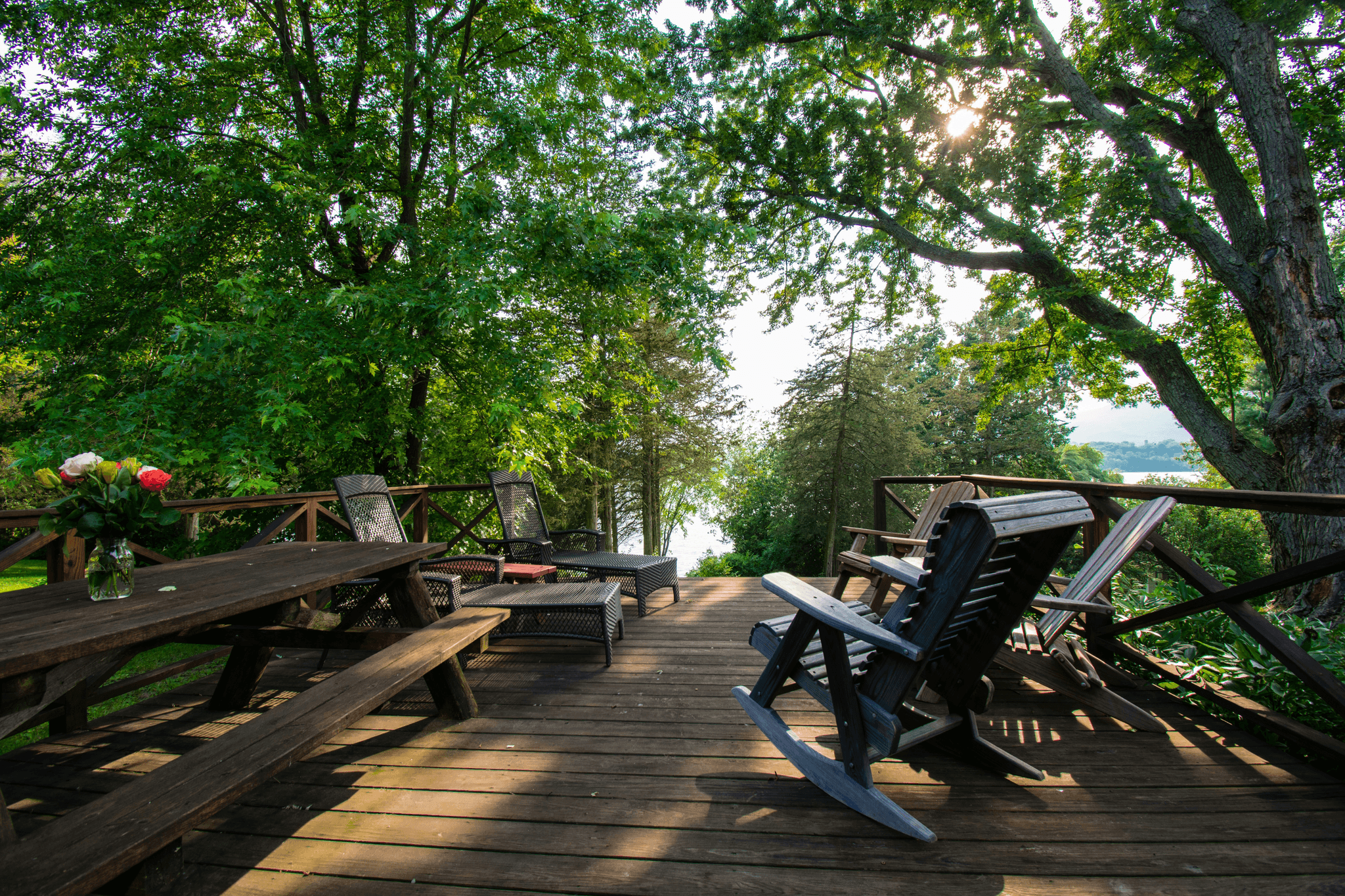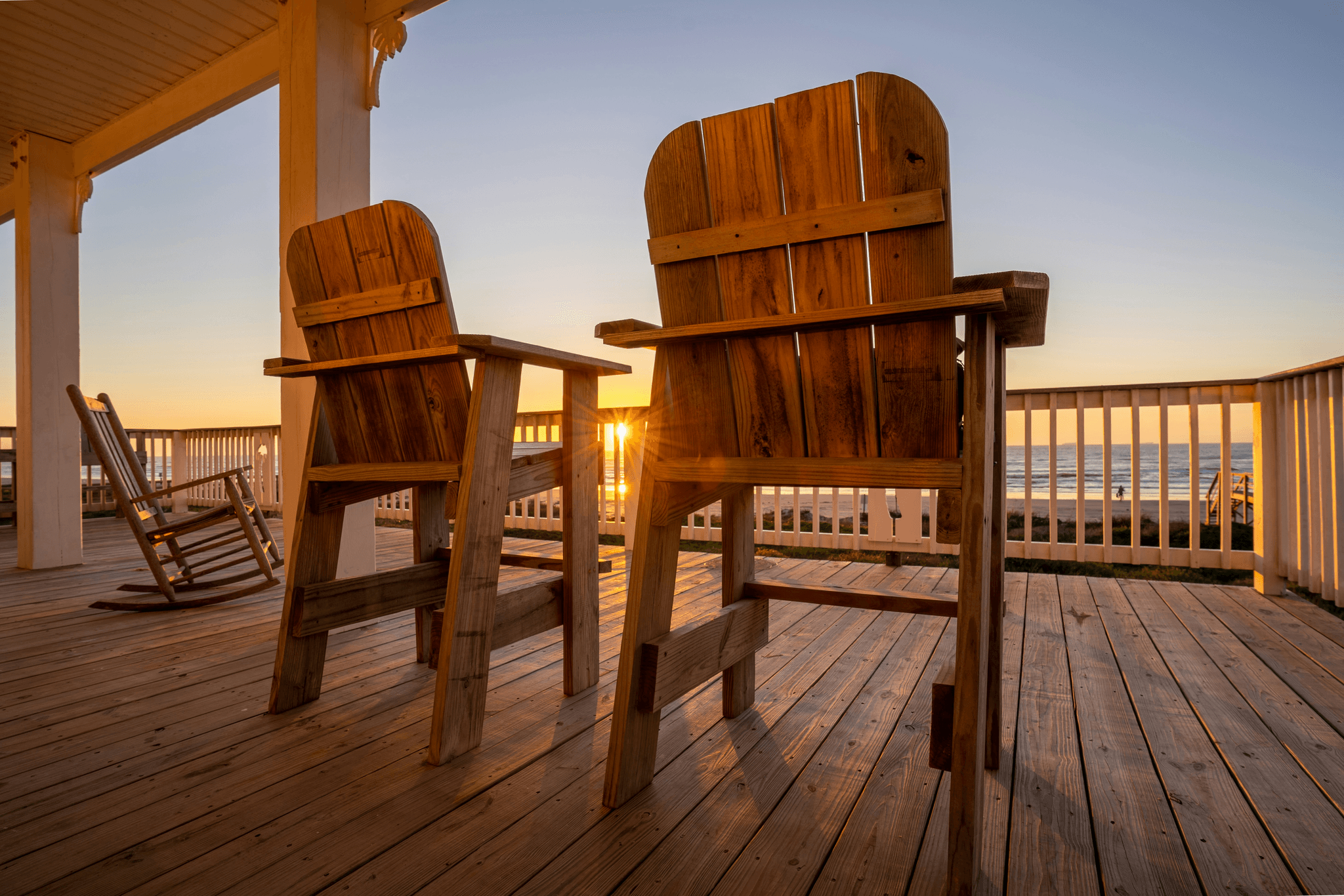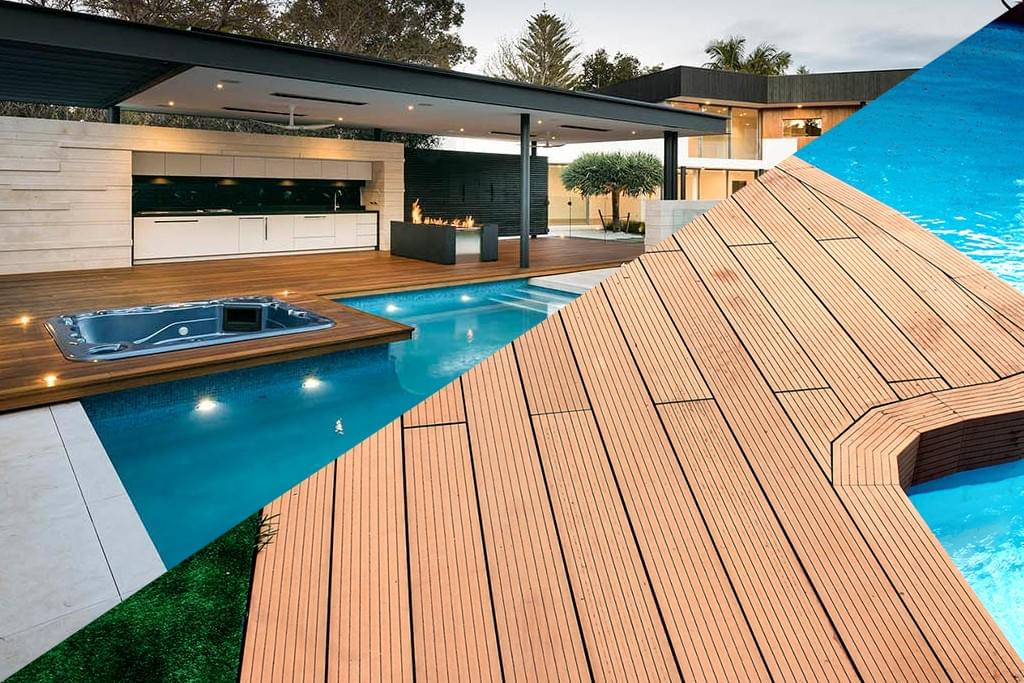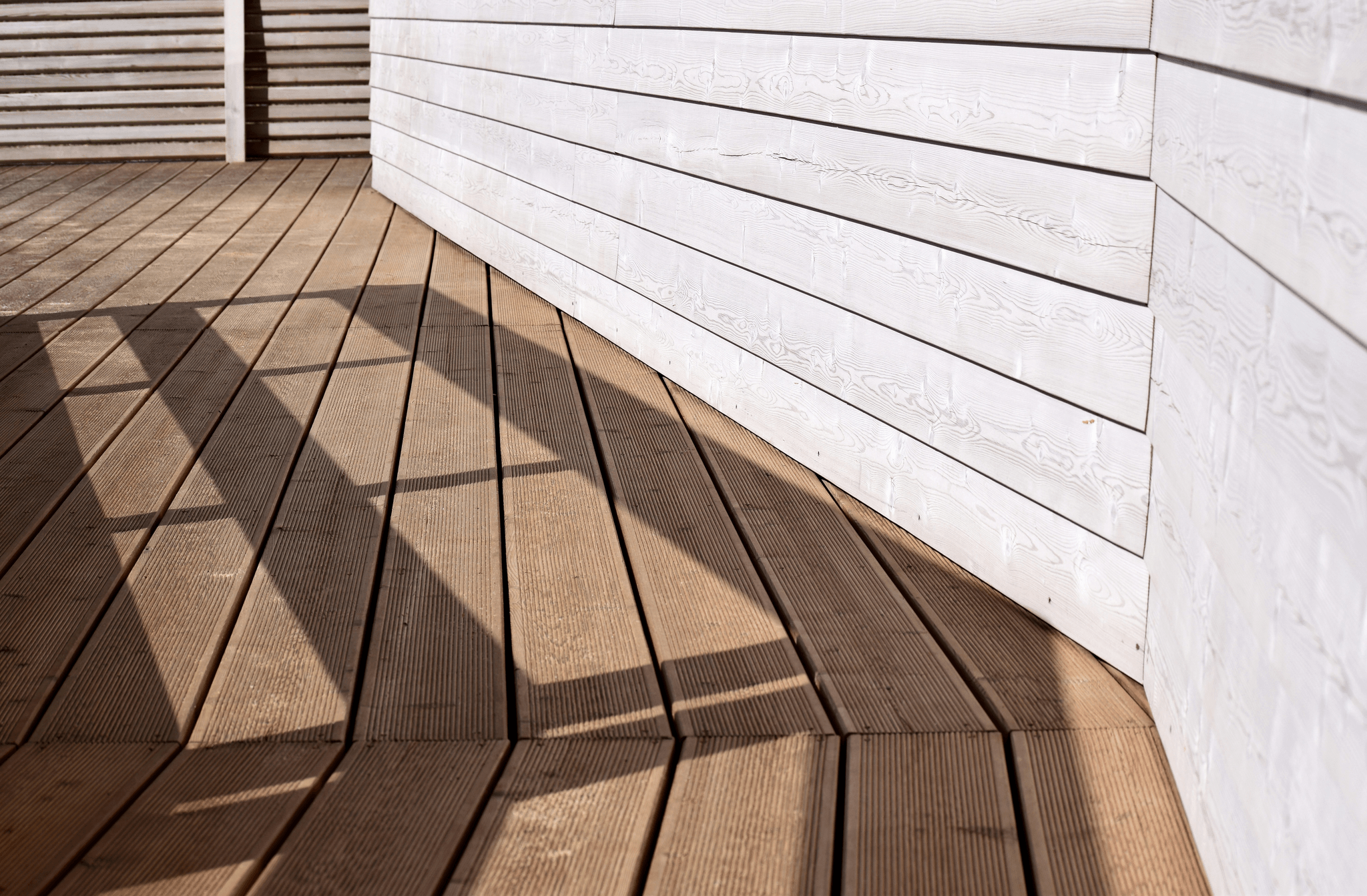Introduction
With options ranging from thin decking boards to wider alternatives, each type brings its own set of benefits and challenges. Understanding these options is crucial for creating a beautiful, functional wood deck that meets your needs and style preferences.
Understanding Deck Board Options
Deck boards come in various sizes and materials, with thin decking boards often favored for their sleek appearance and modern aesthetic. However, larger deck boards provide strength and stability that can be ideal for high-traffic areas or heavy furniture placement. Familiarizing yourself with the characteristics of treated lumber for decks will help you make an informed decision about what will work best for your project.
Benefits of Narrow vs. Large Decking
Thin decking boards are celebrated for their visual appeal; they can create an elegant look that enhances the overall design of your outdoor space. On the other hand, larger deck boards boast superior load-bearing capacity, making them perfect for those who entertain frequently or have substantial outdoor furniture arrangements. Choosing between these two options involves weighing the aesthetic qualities against practical considerations like durability and maintenance.
Key Considerations in Your Choice
When selecting deck wood, it's important to consider factors such as climate, usage frequency, and personal style preferences. Pressure treated wood for decks offers longevity but may require more upkeep compared to low-maintenance composite materials or thinner options. Ultimately, understanding these key considerations will lead you to a well-rounded decision that balances aesthetics with functionality.
The Aesthetics of Thin Decking Boards

These boards create a sleek and modern look that can complement various architectural styles, from contemporary homes to rustic retreats. Their slender profile allows for intricate designs and patterns that larger boards simply can't achieve, making them a favorite among designers and homeowners alike.
Visual Appeal of Narrow Boards
Thin decking boards offer a unique visual charm that draws the eye and enhances the beauty of any wood deck. Their narrow width creates an elegant line that can make spaces appear more expansive, giving your outdoor area a sophisticated touch. Additionally, when combined with contrasting colors or materials, these boards can serve as a striking design element that adds depth and character to your deck.
How Size Affects Your Outdoor Space
The size of your deck boards plays a crucial role in how you perceive and utilize your outdoor area. Thin decking boards can create an illusion of more space, allowing for better flow and movement around furniture or landscaping features. This is particularly beneficial for smaller yards where maximizing every inch is essential; using treated lumber for decks in narrower profiles helps maintain an open feel while still providing functional surfaces for relaxation or entertainment.
Design Trends with Thin Decking
In recent years, design trends have increasingly favored thin decking due to its versatility and modern appeal. Homeowners are opting for minimalist designs that prioritize clean lines and open spaces, making thin decking boards ideal candidates for such aesthetics. Moreover, incorporating pressure treated wood for decks ensures not only style but also durability; this combination allows you to stay on-trend while investing in long-lasting materials that enhance both form and function.
The Strength of Large Deck Boards

Their size not only contributes to a solid aesthetic but also significantly enhances the load-bearing capacity of your structure. This strength is essential for ensuring that your wood decks can withstand heavy furniture, foot traffic, and even those spontaneous dance parties.
Load-Bearing Capacity of Wider Boards
Wider deck boards are designed to handle more weight than their thinner counterparts, making them an excellent choice for homeowners who prioritize durability. The load-bearing capacity of these boards means they can support heavier items without sagging or warping over time. So, whether you're planning to host barbecues or simply want a safe space for lounging, investing in large deck boards could be the smart move.
Durability of Pressure Treated Wood for Decks
When discussing durability in relation to large deck boards, pressure treated wood for decks is often the star of the show. This type of treated lumber for decks undergoes a rigorous process that infuses it with preservatives, making it resistant to rot and insect damage. As a result, larger pressure treated lumber not only provides superior strength but also promises longevity—ideal for those who want their wood decks to stand the test of time.
When Larger Boards Make Sense
Choosing larger boards makes sense in various scenarios; think expansive outdoor spaces or areas where heavy furniture will reside permanently. If you envision hosting gatherings with ample seating or even installing built-in features like benches or planters, wider deck boards will provide the necessary support and stability you need. Additionally, if your climate tends towards extremes—be it intense heat or heavy rainfall—larger treated wood for decks can offer better resilience against these elements.
Maintenance Considerations

Thin decking boards and larger options each have their own maintenance needs, so understanding these differences will help keep your outdoor space looking great for years to come. Regular upkeep is essential for both aesthetics and longevity, especially when using pressure treated wood for decks.
Care Tips for Thin Decking Boards
Thin decking boards may offer a sleek look, but they can be more susceptible to wear and tear than their bulkier counterparts. To keep these delicate beauties in top shape, it's crucial to inspect them regularly for signs of damage or warping. A simple routine of sweeping away debris and rinsing with a gentle hose can prevent dirt buildup and help maintain the smooth surface of your thin decking boards.
Additionally, applying a protective sealant designed specifically for treated lumber for decks will enhance their durability against moisture and UV rays. Be sure to reapply this sealant every couple of years to ensure maximum protection against the elements. Remember that while thin decking boards are stylish, they do require a bit more attention than larger options—so give them the love they deserve!
Cleaning and Upkeep for Large Deck Boards
Large deck boards are often more forgiving when it comes to maintenance; however, they still require regular cleaning to preserve their appearance and functionality. Start by giving your wood decks a good sweep to remove leaves and debris that could trap moisture against the surface. For deeper cleaning, use a pressure washer on a low setting or a specially formulated deck cleaner that won't harm any treated wood for deck surfaces.
It's also important to check for any loose screws or nails in large deck boards since movement over time can cause them to become unstable. If you notice any discoloration or stains from spills or organic materials like leaves, address these promptly with appropriate cleaning solutions tailored for pressure treated lumber for decks. With just a little effort, you'll keep your large deck looking grand!
Choosing Treated Wood for Deck Longevity
Selecting treated wood for decks is one of the best decisions you can make if you're aiming for longevity in your outdoor space. Pressure treated wood not only resists rot but also stands up well against pests that might otherwise wreak havoc on untreated materials. When choosing your deck wood, make sure it's labeled as pressure-treated; this ensures it has been infused with preservatives designed specifically to prolong its life.
Moreover, investing in high-quality treated lumber means fewer repairs down the line—saving you time and money in maintenance costs! Always remember that even though treated wood is durable, it still benefits from periodic sealing and staining every few years; this helps maintain its resistance properties while enhancing its natural beauty over time. By opting for treated wood options alongside proper care practices, you’ll set yourself up with an enduring outdoor oasis.
Cost Comparison: Thin vs. Large Decking

When considering the financial aspect of your decking project, the choice between thin and large deck boards can significantly impact your budget. While thin decking boards may seem more affordable upfront, it's essential to evaluate the costs associated with installation, maintenance, and longevity. In contrast, larger deck boards could carry a higher initial price tag but may offer better durability and reduce long-term expenses due to less frequent replacement.
Price Differences in Deck Wood
The price of deck wood varies widely based on size, type, and treatment options. Thin decking boards often come at a lower cost per square foot compared to their larger counterparts; however, this can be misleading if you consider the overall value they provide over time. Larger deck boards typically require fewer pieces for installation, which can lead to savings on labor costs and reduce waste during construction.
Budgeting for Pressure Treated Lumber for Decks
When budgeting for pressure treated lumber for decks, it's crucial to factor in both material and installation costs. Treated lumber for decks is often more expensive than untreated options due to its enhanced durability against rot and pests; however, it’s an investment that pays off in the long run by minimizing maintenance needs. Additionally, when using pressure treated wood for decks, consider potential future expenses related to upkeep or replacement of thinner materials that might wear out faster.
Long-term Value of Each Option
Evaluating long-term value is essential when deciding between thin decking boards and larger alternatives. While thin decking can be appealing due to its lower initial cost, it may require more frequent maintenance or replacement over time compared to larger boards made from treated wood for decks that are built to last longer under various weather conditions. Ultimately, investing in quality materials like pressure treated lumber for decks not only enhances your outdoor space but also ensures you get the most bang for your buck over the years.
Environmental Impact

When it comes to decking, the environmental implications of your choice can be just as important as aesthetics and functionality. With a growing awareness of sustainability, both composite materials and treated wood for decks offer unique advantages. Understanding these options can help you make a more informed decision that aligns with your eco-conscious values.
Sustainability of Composite Decking Inc
Composite decking has gained popularity due to its sustainable manufacturing processes and long-lasting nature. Made from recycled materials, composite deck boards reduce waste while providing a durable surface that resists fading and splintering. By choosing composite over traditional wood, homeowners can enjoy the beauty of wood decks without contributing to deforestation or using pressure treated lumber for decks that may have harmful chemicals.
Eco-Friendly Choices with Treated Lumber for Decks
While thin decking boards made from treated lumber offer an appealing option, it's essential to consider their environmental impact as well. Many manufacturers now produce pressure treated wood for decks using environmentally friendly preservatives, making them safer for both your family and the planet. Opting for responsibly sourced treated wood ensures that you can enjoy beautiful deck wood while supporting sustainable forestry practices.
Reducing Waste in Deck Construction
Waste reduction is another critical factor when considering deck construction materials. Utilizing thin decking boards allows for more efficient use of resources since they often come in longer lengths, minimizing cuts and leftover scraps. Additionally, selecting pressure treated lumber for decks that are designed to last means fewer replacements over time, ultimately reducing the overall waste generated by your outdoor project.
Conclusion
In the quest for the perfect deck, choosing the right deck boards is crucial. Whether you lean towards thin decking boards or larger options, your decision will significantly impact both aesthetics and functionality. With a careful evaluation of your needs and preferences, you can create a wood deck that enhances your outdoor experience.
Making the Right Deck Board Choice
When selecting between thin decking boards and wider alternatives, consider how each option aligns with your lifestyle and design vision. Thin decking boards can offer a sleek, modern look that complements contemporary spaces, while wider boards provide a robust appearance suitable for traditional designs. Ultimately, the right choice hinges on balancing visual appeal with practical considerations like durability and maintenance.
Balancing Aesthetics and Functionality
A successful deck design harmonizes aesthetics with functionality; after all, it's not just about looking good but also feeling good underfoot. Thin decking boards may elevate the style of your outdoor space but might require more upkeep over time compared to treated lumber for decks that are inherently more durable. Finding that sweet spot where beauty meets practicality ensures your wood decks remain inviting year after year.
The Future of Your Wood Deck Adventure
As you embark on this wood deck adventure, consider how trends in treated wood for decks evolve alongside innovations in materials like pressure treated lumber for decks. Embracing eco-friendly options can enhance both sustainability and longevity in your outdoor living space while still allowing room for personal expression through design choices. Whatever path you choose—be it thin decking boards or their heftier counterparts—your deck will be an extension of your home that invites countless memories to come.
